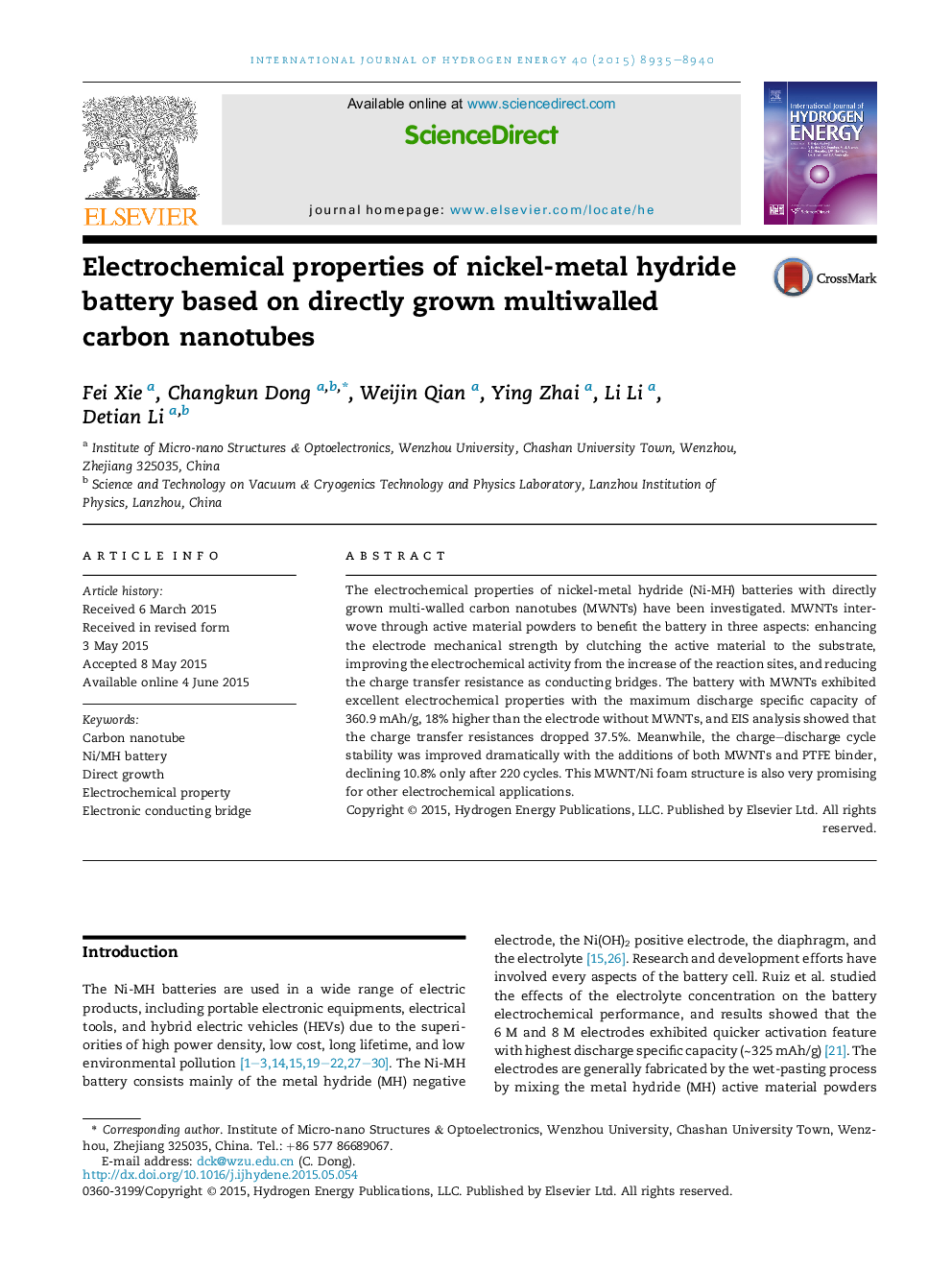| Article ID | Journal | Published Year | Pages | File Type |
|---|---|---|---|---|
| 1275134 | International Journal of Hydrogen Energy | 2015 | 6 Pages |
•MWNTs rooted into Ni foam by CVD direct grown without extra catalyst layer.•MWNTs interpenetrated through active material powders as electrical conducting bridges.•MWNT incorporated cell exhibited excellent discharge stability with decay of 10.8% after 220 cycles.•Charge transfer resistances of the electrode dropped 37.5% with the addition of MWNT layer.
The electrochemical properties of nickel-metal hydride (Ni-MH) batteries with directly grown multi-walled carbon nanotubes (MWNTs) have been investigated. MWNTs interwove through active material powders to benefit the battery in three aspects: enhancing the electrode mechanical strength by clutching the active material to the substrate, improving the electrochemical activity from the increase of the reaction sites, and reducing the charge transfer resistance as conducting bridges. The battery with MWNTs exhibited excellent electrochemical properties with the maximum discharge specific capacity of 360.9 mAh/g, 18% higher than the electrode without MWNTs, and EIS analysis showed that the charge transfer resistances dropped 37.5%. Meanwhile, the charge–discharge cycle stability was improved dramatically with the additions of both MWNTs and PTFE binder, declining 10.8% only after 220 cycles. This MWNT/Ni foam structure is also very promising for other electrochemical applications.
